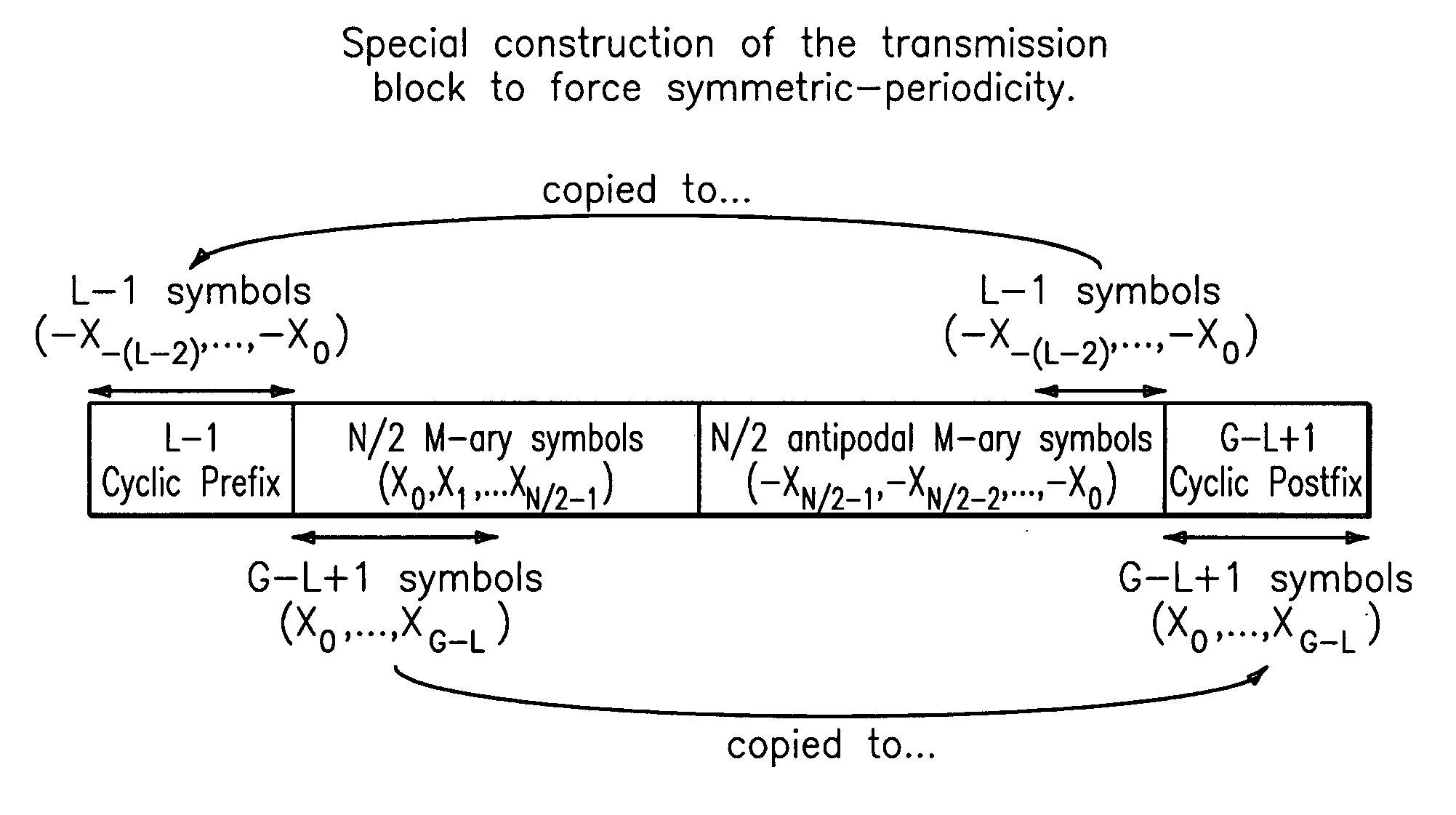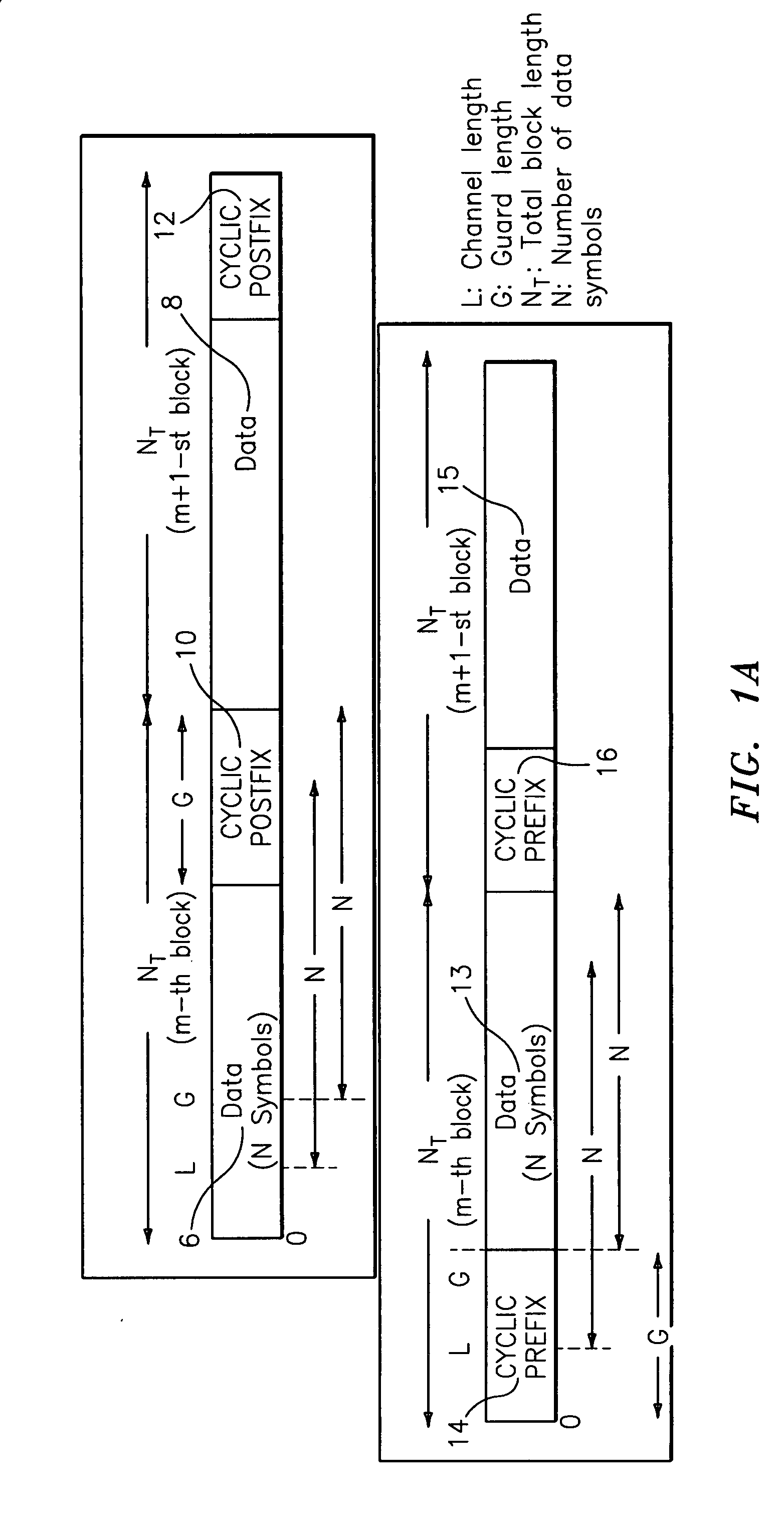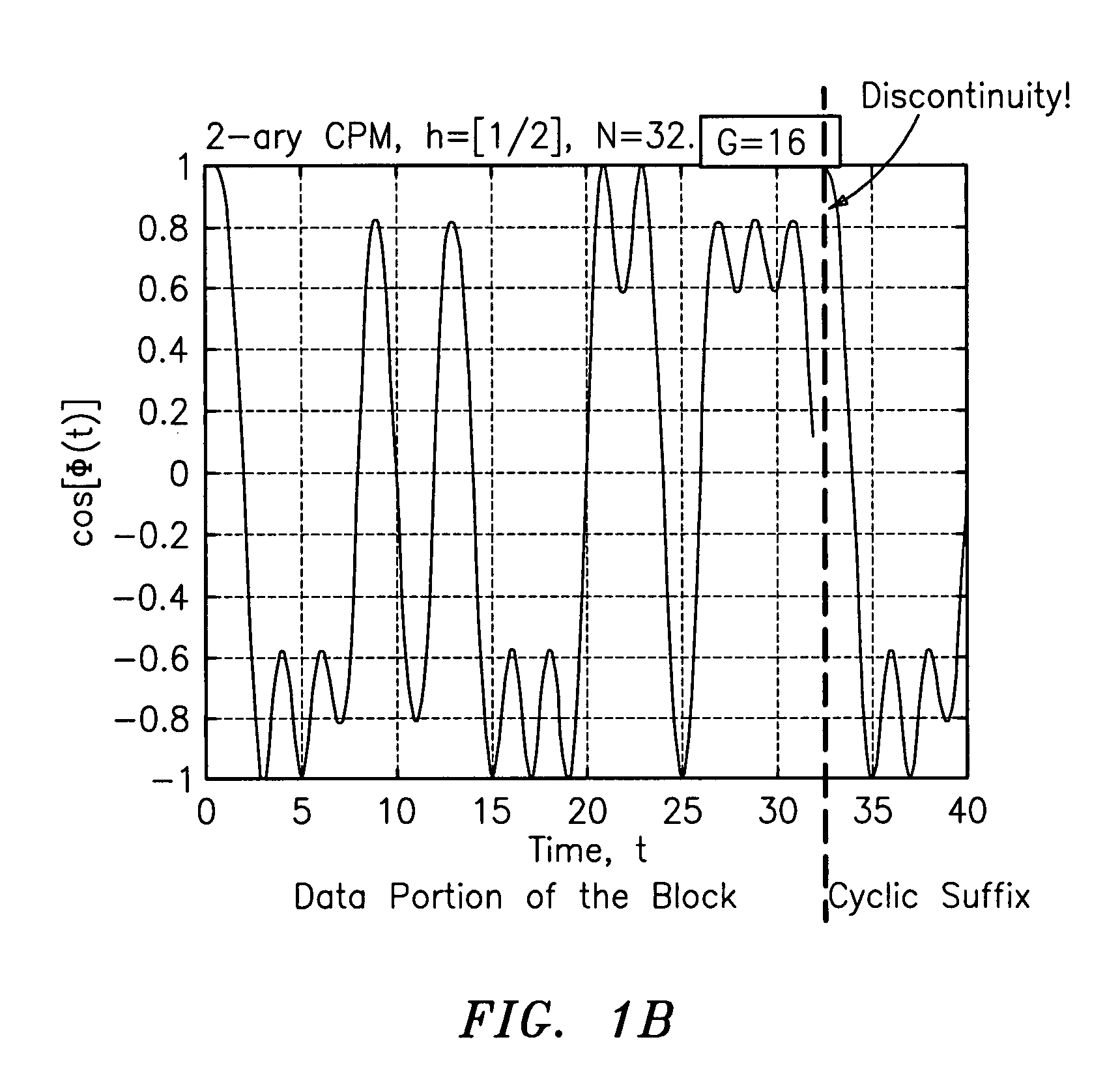Low complexity method and apparatus to generate a symmetric-periodic continuous phase modulation (CPM) waveform
a symmetric-periodic continuous phase and waveform technology, applied in electrical equipment, digital transmission, transmission, etc., can solve the problems of reducing spectral efficiency, expanding the signal bandwidth, and dft-based single-carrier fde techniques have only recently been applied to continuous phase modulation, so as to facilitate the creation of a symmetric-period extension, facilitate the creation of flexibility, and facilitate the effect of cpm receiver flexibility
- Summary
- Abstract
- Description
- Claims
- Application Information
AI Technical Summary
Benefits of technology
Problems solved by technology
Method used
Image
Examples
Embodiment Construction
[0048] The present invention provides a new and unique method and apparatus to generate a sequence of symbols to be transmitted,—that features transmitting a block of symbols having data symbols and redundancy symbols, the redundancy symbols being generated based on the data symbols, a first part of the redundancy symbols being transmitted as a prefix of the block, a second part of the redundancy symbols being transmitted as a postfix of the block and a third part of the redundancy symbols being transmitted as an intermediate part of the block between the prefix part and postfix part. In one embodiment, the first part of the redundancy symbols may be generated from the symbols that are transmitted at the end of a data portion of the block, the second part of the redundancy symbols may be generated from the symbols that are transmitted at the start of the data portion of the block, the third part of the redundancy symbols (which are transmitted in the second half of the data portion ...
PUM
 Login to View More
Login to View More Abstract
Description
Claims
Application Information
 Login to View More
Login to View More - R&D
- Intellectual Property
- Life Sciences
- Materials
- Tech Scout
- Unparalleled Data Quality
- Higher Quality Content
- 60% Fewer Hallucinations
Browse by: Latest US Patents, China's latest patents, Technical Efficacy Thesaurus, Application Domain, Technology Topic, Popular Technical Reports.
© 2025 PatSnap. All rights reserved.Legal|Privacy policy|Modern Slavery Act Transparency Statement|Sitemap|About US| Contact US: help@patsnap.com



